Hello everyone,
yesterday, we talked about the Škoda Š-III, the birth of the “breakthrough” tank progam and its failure. Today, we are going to have a look at Škoda’s competitor by the company Tatra, which was – and it is hard to believe – even worse.
Just like the Škoda Š-III, the Tatra prototype started originally as a wheel-cum-track project, started after the original wheel-cum-track vehicle developer, ČKD (with its Kolohousenka projects), decided it’s not worth the hassle and the Praga concept (P-III) was never really developed (nothing is known about it).
Tatra recieved the first order from the ministry of defense on 18.11.1932 – the task was to create two prototypes of wheel-cum-track vehicles, built by Tatra – without the turrets though. Turrets and weaponry were to be built by Škoda. The company Tatra was not a complete newbie in the business, being famous for its line of heavy trucks with very original – and brilliant – suspension. However, it did not have much experience in creating armored combat vehicles – or rather, none at all.
Under such circumstances, the deadline for the project (September 1933) was considered to be too harsh. The biggest issues in designing the vehicle proved to be (just like in Škoda’s case) the combined suspension, as well as the development of the new, more powerful engine, designated Tatra V-630 (a water-cooled V12, 240 horsepower). Naturally, the development dragged on and in November 1933, Tatra asked the MoD to move the deadline by one year to September 1934.
In December 1933, a military inspection took place at Tatra to assess, how well is the company doing in the design. It was found out that while the weight requirement was actually kept below 15 tons (unlike with Škoda proposal), the wheel cum track suspension is actually simply too complicated and the requirement was dropped later on in July 1934. The official reason was that it was needlessly complicated, but unofficially there was this general idea that if neither ČKD nor Škoda, some of the best design and construction companies in Europe (without any overstatement) both think it’s a stupid idea and it’s hard to design, it’s probably true. At this point, Praga already gave up some time ago on the “III” class project. Based on the analysis, that led to this decision, the army published new conditions for the “class III” vehicles, as described in Part 1 (short version: 16 tons, 47mm gun, 16-32mm armor, 25 km/h).
In January 1935, the original order for the wheel-cum-track prototypes was amended to reflect the “category III” changes. It was at this point (February 1935) that the Tatra company accepted the task to build two T-III prototypes of a vehicle that bore the factory designation Tatra T-78. There were some differences between the earlier proposals and the T-78, most importantly the new, radial (!) 11-cylinder engine, new suspension and transmission.
After the project was approved (or rather, the final requirements were), the design work went on, but very slowly. It turned out that Tatra was underequipped and inexperienced to handle the complex task of creating a relatively heavy tank. Communication with Škoda (designing the turrets) was problematic and the hull itself was changed over and over again to fix various issues, which in turn delayed building the actual prototype. The vehicle was to be read on 30.9.1935 for driving trials, but this deadline was not kept either and further delays followed the next year as well. Finally, two prototype hulls were practically ready on 9.10.1936, but Tatra requested further deadline shifts to December 1936because Škoda was able to provide only one turret with armament for tests in October.
The trials were finally started in late February, 1937 (22.2.). The two prototypes were slightly different. The first was was designated T-III/I, had the army number 13.640 and was tested without a turret with a “heavy” set of tracks. The second one was designated T-III/II, had the Škoda turret, light “Vickers” type tracks and its number was 13.641.
The first trials did not go well – between February and March 1937, the first prototype drove 363 kilometers and the second one 460 kilometers. Both suffered from breakdowns (some of them were quite severe), as a result of which the trials had to be temporarily cancelled. They were resumed some weeks later and both vehicles were rigorously tested in rough terrain and in all weather conditions. Until May 1937, the first prototype had 1030 kilometers clocked already, the second one drove for 1273 kilometers.
Even these later trials however were plagued by problems, which had not only to be repaired, but in several cases, the design of the vehicle had to be quickly reworked as well. These issues were connected especially to the engine and transmission – breakdowns of hydraulic steering, breakdowns of transmission, breakdowns of brake system, oil leaking from the engine, the engine was constantly overheating, gasoline was overheating in tanks, the ventilation of the combat compartment was terrible and many others. The chief of trials, trial commissar captain Karel Dvořák in his final report stated that the vehicle is not under any circumstances combat-worthy and have to be completely reworked, because:
“The environment in the combat compartment is completely unbearable and the crew can remain in a buttoned-up vehicle only for a very short time.”
Not even his report, stating that the vehicle is utterly worthless, dissuaded the army from further trials for the rest of 1937 and during Spring 1938. The breakdowns continued – especially those of the brake system, transmission, steering, tracks, the engine kept overheating etc. The nastiest (and possibly decisive) flaw of the vehicle was however its fuel and oil consumption, practically prohibiting their use under combat conditions – the combat consumption of the vehicle was 3,5 kilograms of gasoline per 1 km, which equalled cca 460 liters per 100 km (average consumption was 123 liters and 18 kilograms of oil per 100 km), operational range was only several dozen kilometers.
In February 1938, since the army demanded that both Š-III and T-III were to be equipped with the same tracks, Tatra ordered the tracks from Škoda. The original tracks and the turret were removed and the only thing that basically remained of the vehicles were two unusable hulls. Under these circumstances, Tatra offered to discontinue the T-III development and to scrap the order for the prototypes. The MoD agreed, they cancelled the order and agreed to pay 1.600.000 CZK for the two prototypes.
As a result of this deal, both vehicles were transferred to the army, specifically to Vyškov to the military school, in November 1938, where they remained as incomplete hulls for educational purposes. On 21.11.1938, the vehicles were officially trasnferred to the army. The military report from that day states that the vehicle does have some advantages (mobility, agility and speed for its weight), but its enormous fuel consumption makes it unusable. As a result, on 25.11.1938, it was decided to keep one of the prototypes around for education, the other was to be used as a practice target during artillery gunnery excercises or for scrapping (conflicting resources). The final fate of the vehicle remains unknown, but one thing is for sure – after the German occupation, at least one of the prototypes was captured by Germans and tested after the occupation. Likely without any success.
Characteristics
The original data are by I.Pejčoch, the data in brackets are based on different source (archive research by J.Tintěra)
Weight: 16,4 tons
Crew: 4
Length: 5,85m (5,83m)
Width: 2,56m (2,59m)
Height: 2,42m (2,82m)
Clearance: 0,4m
Track width: 35cm (T-III/I), 37cm Vickers (thinner, on T-III/II), planned 380-400mm
Armor: 32/30/25mm (same for hull and turret, turret was identical to Š-III)
Engine: Tatra T-78 (water-cooled 18 liter radial 11 cylinder, 276hp at 2000 RPM)
Power-to-weight: 16,82 hp/t
Maximum speed: 35 km/h (15 km/h in terrain)
Armament: 47mm A9a (modified A9 to fire the ammunition for the Škoda A6 fortification gun), two machineguns
Ammo carried: 96 rounds
In World of Tanks
Just like the Š-III, this tank is a good candidate for lowtier (2-3) premium heavy tank. It really has no place in any Czechoslovak branch (due to its producer and type), but as a premium it would work well. In World of Tanks, where tank reliability is not an issue, the power output of its engine would make it nimble, with the power-to-weight rivalling that of light tanks.
Source:
valka.cz
utoznavozba.wz.cz
I.Pejčoch – Obrněná technika

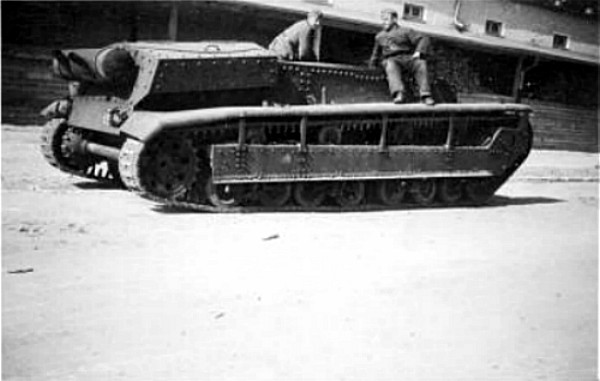
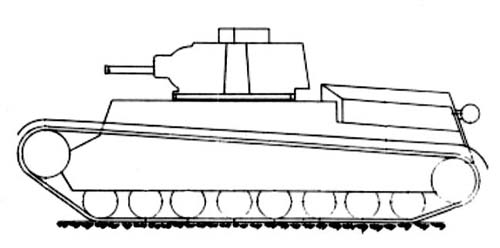

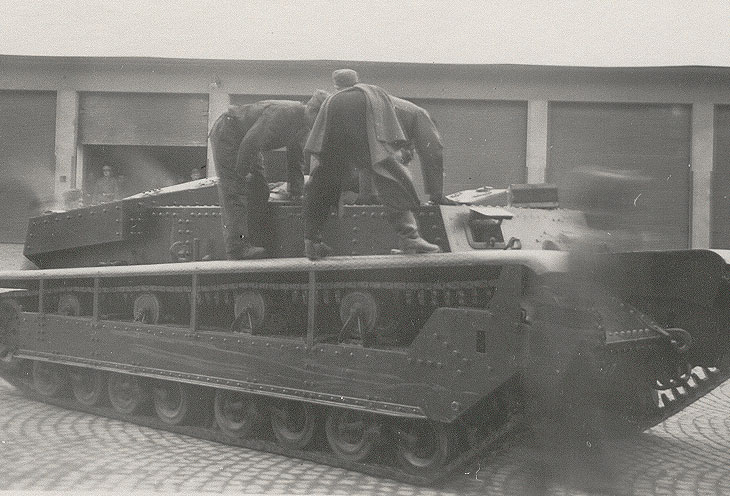
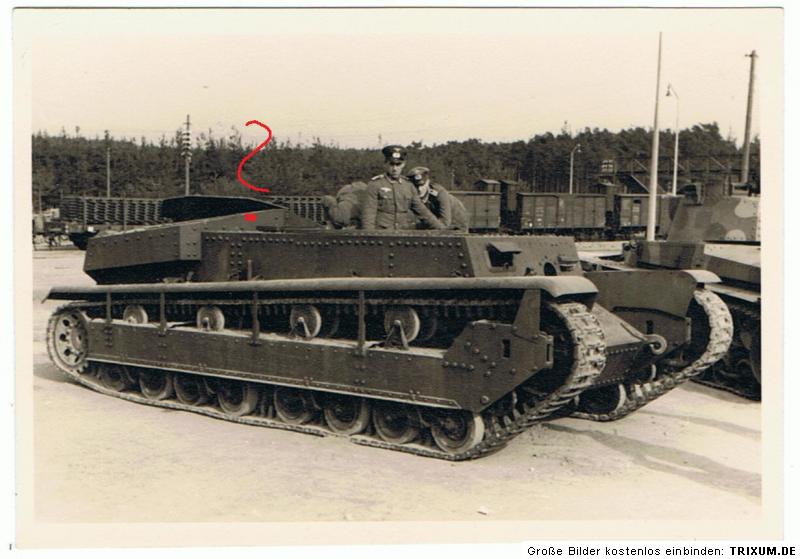
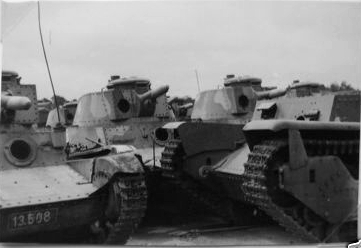
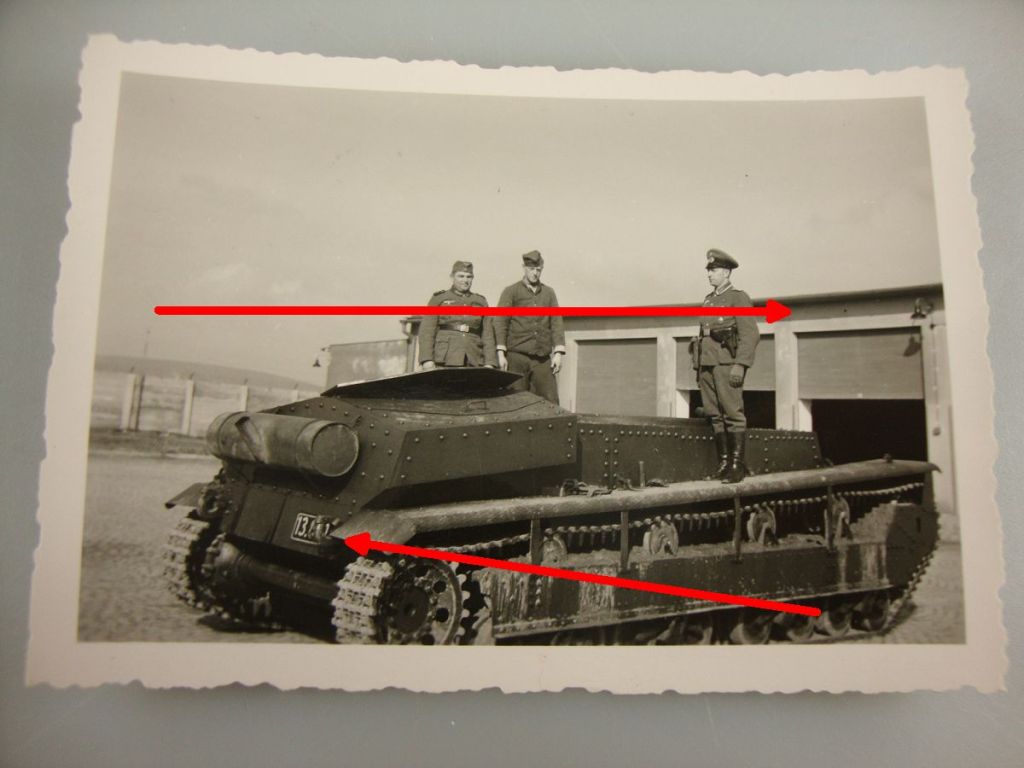
Its kinda wrong to call it failure I think since tanks still were pretty new in 1935. I applaud them for trying to come up with new designs and solutions to their problems. I would rather call it a poor design choise but then again..Tanks in 1935 were just beginnging to evolve into what they are today, so ofcourse they dident have much inspiration to what a good tank design is.
Just my opinion though..Dont hate
By 1935, we already had LT Vz.35 for example, which was quite a solid light tank, or the LT Vz.34 – so there was definitely some previous success and thus experience. The “III class” was generally a screwup.
Wow, that’s thirsty. 460 litres per 100km
Yeah, that’s around 200ish metres per liter of fuel.
And thats really insane.
IIRC the Centurions that the danish army had, could go about 250 metres per litre petrol (no diesel) :-)
I have played with Großstraktor and mean that it could by roughly the same. Big, paper, much HP.